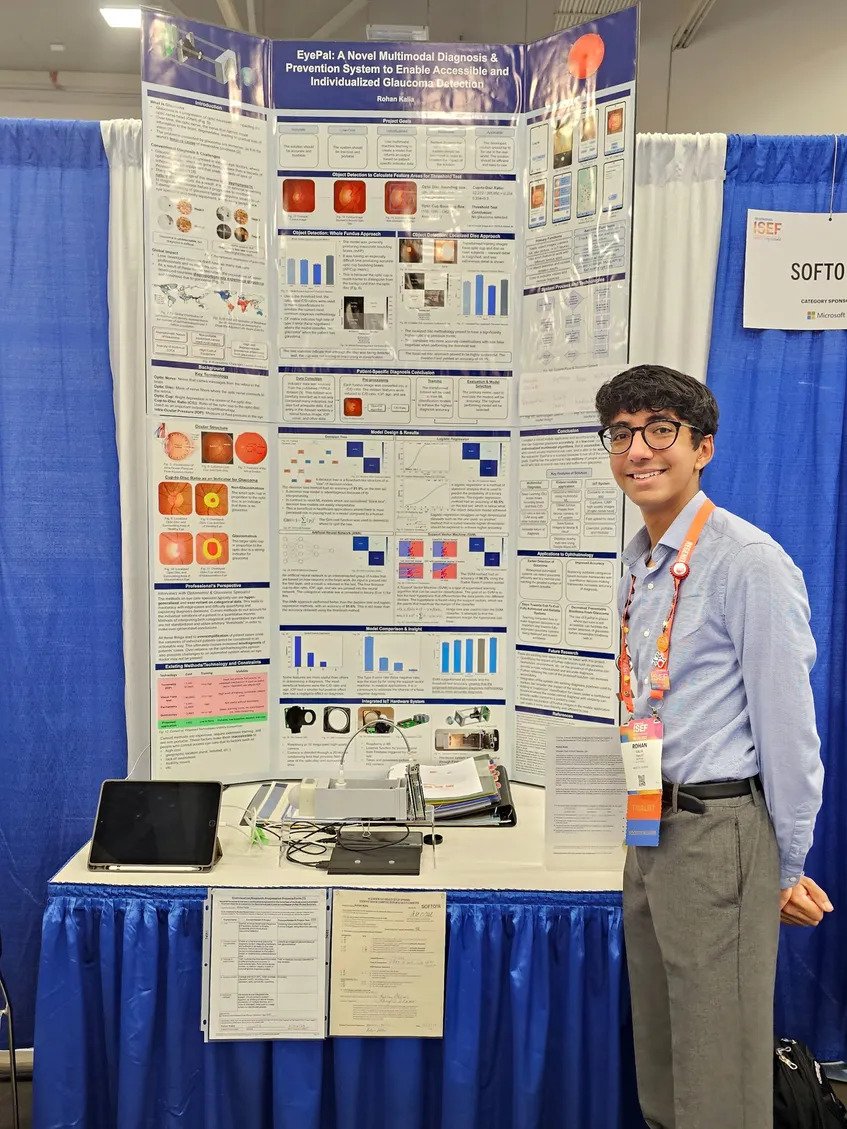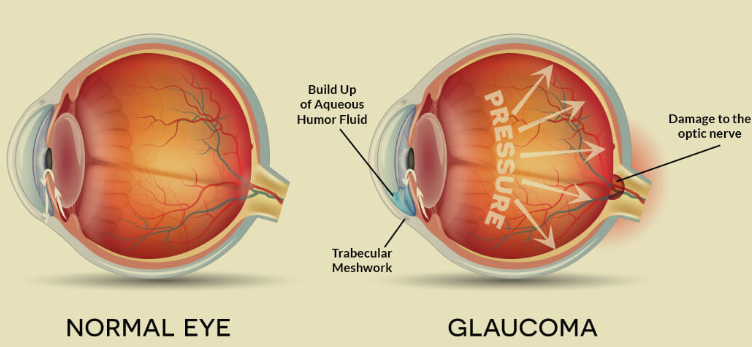(August 25, 2023) It was after one of Rohan Kalia’s family members was diagnosed with glaucoma that the Indian-American teenager began researching an affordable technology that could be used for early detection. A sophomore at Wheeler High School in Marietta, the 17-year-old found that glaucoma ranks as the second most prominent cause of irreversible blindness on a global scale. The startling fact prompted him to look for an affordable solution in the form of a device that can accurately diagnose the condition. This gave birth to EyePal, a portable device that can detect glaucoma with 95 percent accuracy. The invention won the teenager the 2023 IEEE (Institute of Electrical and Electronics Engineers) President’s Scholarship, which comes with a prize of $10,000.
Glaucoma is an eye disease involving the degradation of the optic nerve that carries visual information, leading to a gradual loss of vision. If not detected early, it can lead to some degree of permanent blindness. The condition is detected from images taken of the retinal fundus (the back surface of the eye’s interior) during a standard examination by an opthalmologist. During his research, Rohan found that a person’s socioeconomic condition impacts the diagnosis of glaucoma. “I learned that there’s a huge disparity in eye care treatment across the world,” Rohan said, adding, “Diagnosis and prevention of glaucoma is not accessible.”

Rohan Kalia
Moreover, he discovered that people in rural areas are worst affected as many individuals face difficulty in accessing glaucoma testing due to a shortage of eye doctors and testing centers, coupled with the expensive equipment, absence of health insurance, and high-test costs. Understanding the severity of the condition, Rohan knew he had to find a solution. Explaining the working of EyePal, he said, “The EyePal uses a quality camera, a Raspberry Pi minicomputer, machine-learning technology, and a mobile app. The camera takes photos of the fundus and sends them to a mobile device that can be examined by a specialist. EyePal showed 95 percent accuracy when tested on sets of fundus images.”
Apart from its accuracy, the device’s portability is yet another plus point as it can be employed in rural medical centres and health clinics as opposed to the standalone specialised equipment that can be used only in a doctor’s office or vision testing center. “The device costs less than $100,” Rohan said, adding, “It’s 50 times cheaper than the average price of ophthalmology equipment, in addition to being highly portable. What I did was create this new ensemble-based system of diagnosis.”


The invention won him the President’s Scholarship, which refers to as a “nice surprise.” Moreover, EyePal was presented at the Regeneron International Science and Engineering Fair (ISEF) in May in Dallas, Texas.
The inventor, who loves creating solutions and plans to work in the field of research, advices future engineers to keep going despite the obstacles. “In an engineering project, you’re going to face times you want to give up, but keep persevering. Pick a project topic that you really like,” the Global Indian says, adding, “When you’re really interested in the topic, it will give you the motivation to keep pushing through.”

